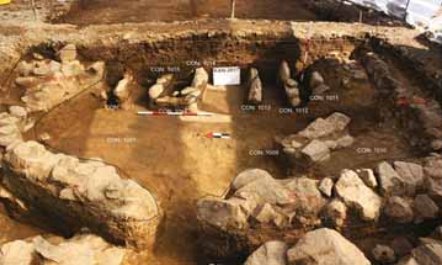
According to the Public Relations Office of the Research Institute of Cultural Heritage and Tourism (RICHT), Yousef Fallahian, Project Manager and head of the salvage explorations in Kani Sib (Kani Siv) announced this at a meeting held in the Archeology Research Institute premises.
Despite having specific characteristics and enjoying abundant water resources and fertile lands for agricultural and livestock breeding purposes, the area has the capacity for the formation of settlement centers either independent or semi-independent from the past up to the present, he said.
He went on to say that the architectural spaces are not right angled and the thickness of the walls in different places of the building and even in some cases in one side of the wall is not the same.
In some architecture the architectural plan is not understandable due to the interferences caused by a newer architecture on the one hand and due to the low expansion of the trenches on the other hand, he added.
The head of the exploration team noted that the discovered stone platforms in the most logical interpretation were for preservation of objects such as edible items of the households at a higher place and away from the reach of animals such as mouse and the like.
Stressing that in each four 5x5 trenches of the Workshop B, a thick wall with a width of 130 to 150 cm was discovered which had been built with bulk stone and mud mortar, Fallahian added that presence of such a thick wall at the end of the eastern margin overlooking the valley most likely reveals the defensive position of the place which perhaps related to a castle or the like more than anything else.
He said initial estimates are indicative of the belonging of the monuments of this area to the Iron Age but this Iron Age is contrary to other areas which had been discovered and studied in other places of Iran.
In contrast to the expectations, there was no evidence of figurine, riton or ceramic pottery and even presence of iron and bronze or other metals and its clay work culture seems almost independent although traces of the general culture of the Iron Age in Iran and the region are detectable such as the grey and brown bowls with a particular curvature edge which is specific to the Iron Age.
9376**2050
www.irna.ir
 solhkhabar | Peace International News Agency Peace International News Agency , Peace News , International Agency News of Peace
solhkhabar | Peace International News Agency Peace International News Agency , Peace News , International Agency News of Peace